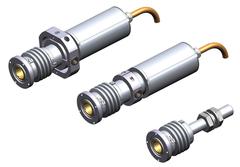URL: https://www.desy.de/news/news_search/index_eng.html
Breadcrumb Navigation
DESY News: Production of the CTA medium-sized telescopes begins
News
News from the DESY research centre
Production of the CTA medium-sized telescopes begins
The upcoming Cherenkov Telescope Array Observatory (CTAO), of which DESY is a critical member, has begun production of its components. Calls for tender for the first components have already been sent out since December, a major milestone in the construction of the observatory’s first two telescopes, which will be located on La Palma in the Canary Islands and in the Atacama Desert in Chile. The medium-sized telescopes within the array will require extremely sensitive mirror controls. To produce these systems, DESY has partnered with the University of California Santa Cruz (UCSC), which will build the active mirror control systems and bring them to series maturity.
The CTAO will have five to ten times the sensitivity of any gamma-ray observatory yet built. Comprising more than 60 telescopes across the two locations, the observatory’s measurements will have an unprecedented accuracy, making wide-ranging pictures of the sky in the shortest times as well as observations of the effects of dark matter a reality. Within the array, there will be 14 medium-sized telescopes in Chile and 9 in the Canary Islands built.Each of the medium-sized telescopes comprises 86 mirror segments, wherein each mirror is controlled by two stepper motor driven actuators. UCSC will take over responsibility for the construction of these components. The active mirror control will enable a remote adjustment, such that a functional reflective surface of 90 square metres can emerge from the proper positioning of all of the individual components. That means high precision, but the conditions will also require a high degree of reliability. The components need to work in the most extreme weather conditions within the environments of both the Atacama Desert as well as the mountains of the Canary Islands at highs of more than 2200 metres above sea level.
In addition to UCSC’s involvement, scientists and engineers from the University of California Los Angeles (UCLA), the Smithsonian Astrophysical Observatory (SAO), and the NASA Goddard Space Flight Center in the US, as well as the Institut für Astronomie und Astrophysik in Tübingen (IAAT) in Germany, are collaborating on the project. UCLA, SAO, and NASA Goddard are working on the development and production of the actuators for the mirror control, while the IAAT is responsible for preparing the test benches and quality assurance procedures for the production process. “DESY’s contribution to the project is the development of the electronics systems to series maturity, the production of the complete electronics and cabling, the development of control software, and finally the commissioning of the finished systems,” says Markus Garczarczyk, who is the medium-sized telescope project lead at DESY and the initiator of the partnership with UCSC.
“We are excited about this long-term cooperation,” says David Berge, a leading scientist at DESY who is coordinator for the work at DESY on the CTAO. “UCSC’s involvement comes at exactly the right time as we get to building these unique telescopes.”




